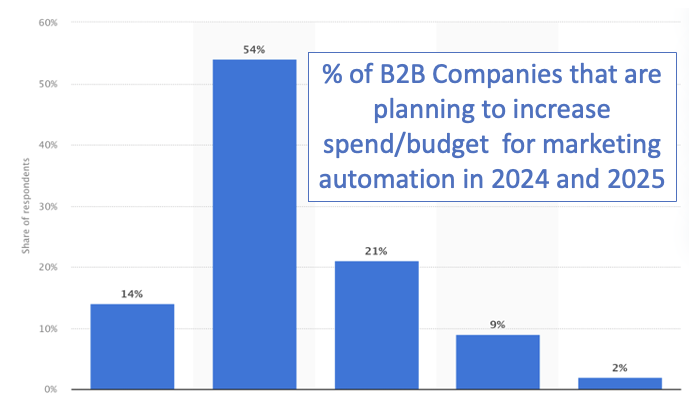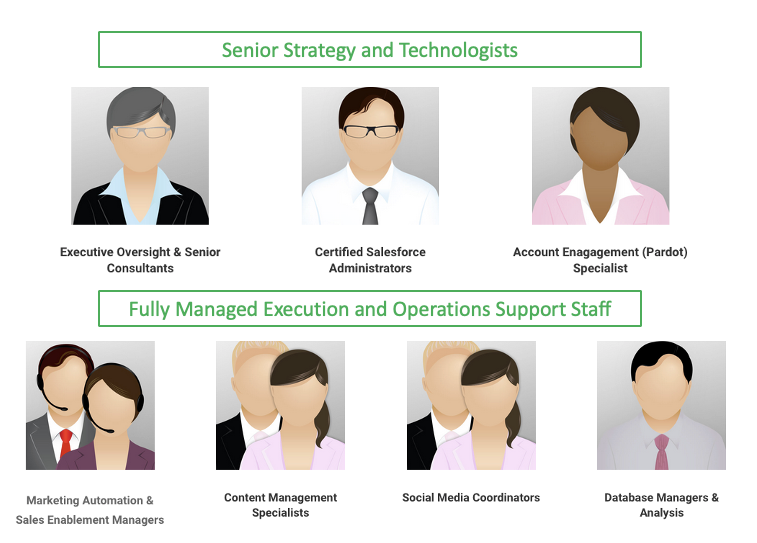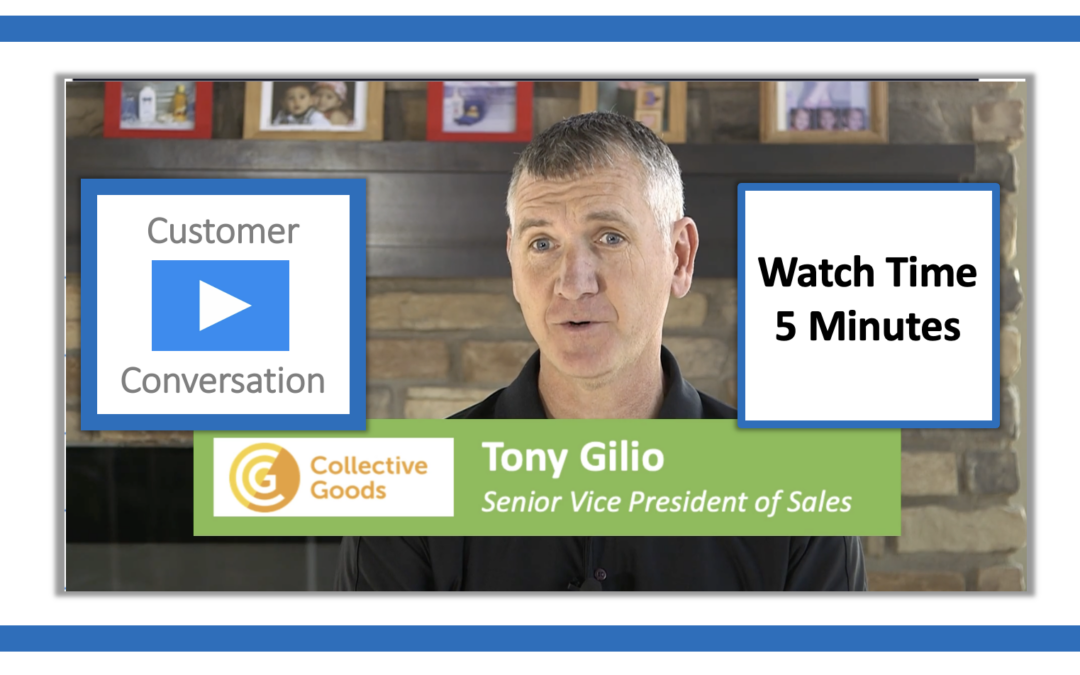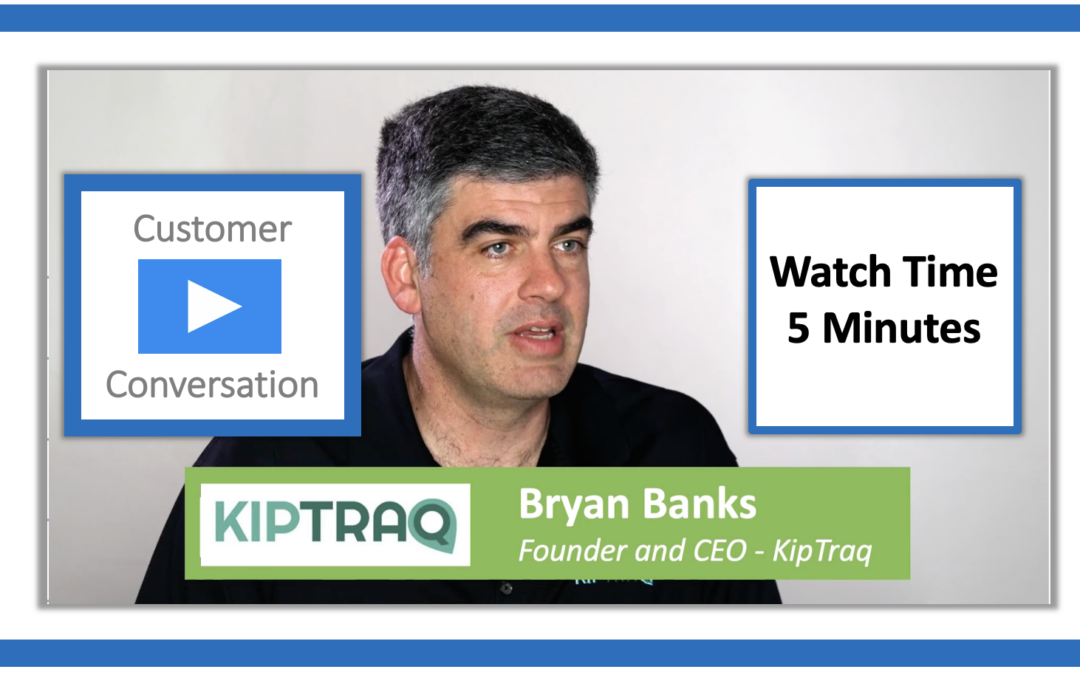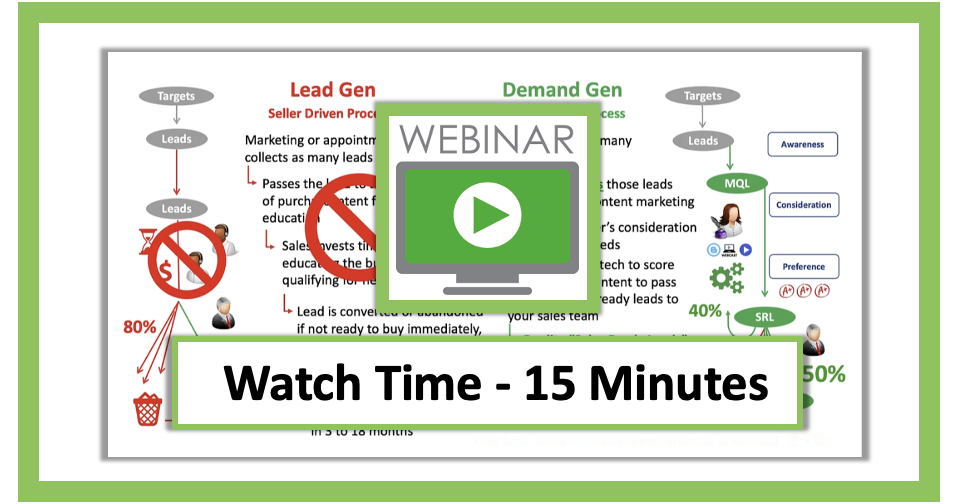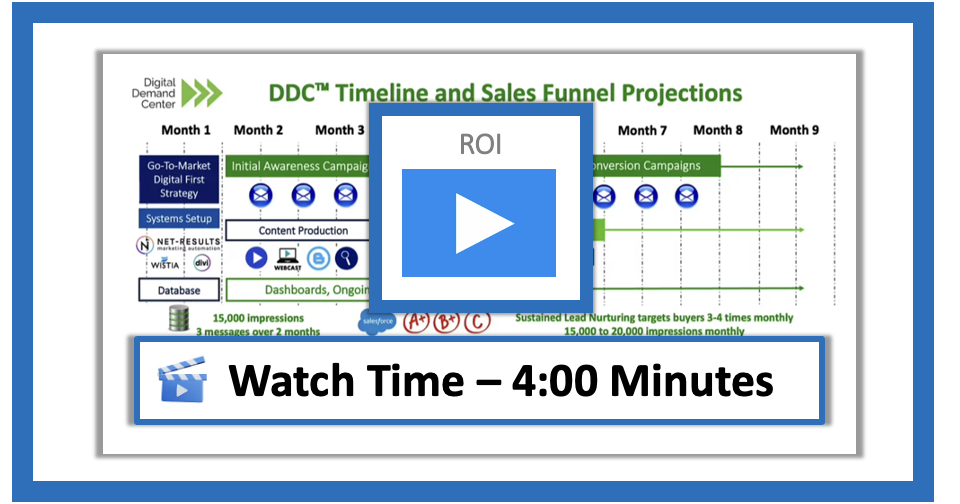
Sales Funnel Results With Lead Nurturing
Sales Funnel Results With Lead Nurturing + Demand Generation
(Watch Time – 4:00)
Summary
In this video we explain sales funnel results with lead nurturing, how long it takes to launch a demand generation and lead nurturing engine, and the sales funnel results you should expect running a campaign to 5,000 well targeted buyers.
Transcript
Introduction
When you examine the entire sales funnel, lead gen is the first step in the sales process and in the buyer’s journey. Lead gen’s job is to move buyers into the top of the sales funnel by creating awareness and curiosity about your solution. And then demand gen and lead nurturing takeover. Demand generation and lead nurturing automate the pre-sales education process as the buyer goes through their second step of consideration and their third stage of preference. This process keeps the seller top of mind as the buyer moves deeper into the funnel. And when the buyer’s ready, sales takes over to help them make a decision.
As discussed in other videos in much greater detail, Digital Demand Center specializes in demand gen and lead nurturing to put well educated buyers into your CRM for your sales team to develop and close. And as part of our service, we also support your initial go-to-market strategy, awareness, and lead gen campaigns if you don’t already have a database built or a lead gen vendor or process you trust.
Time to Launch
To fully launch a demand generation engine, including our solution Digital Demand Center, typically takes about three months. In the first month, you can craft your go-to-market strategy, implement your automation systems, and deal with cleaning, augmenting, and building your database. In months two and three, you can run your initial awareness campaigns to generate early stage leads, augment gaps in your sales education content production, access your marketing automation and sales dashboards, start your reporting, and start the ongoing optimization of your marketing tech and campaigns. By month four, you are starting at execute, lead nurturing, and you’re starting to see your initial flow of sales ready leads in your CRM.
Projected Sales Funnel Results
How long does it take to start seeing the results? So to make the math easy, let’s assume we start your awareness campaign with 5,000 targets. These 5,000 targets will be sent three different messages for the equivalent of 15,000 impressions. So, early in your campaign, you should see about 200 to 400 early stage marketing qualified leads by month four. Marketing Qualified Leads are defined by demonstrating initial engagement with your content. They know who you are and the basics of what you do. And if you need to be aggressive, you can start calling these early stage leads.
Then typically by month five, the marketing engine is doing what it was designed to do as the lead nurturing campaigns continue to target your buyers three to four times a month for and additional 15,000 to 20,000 impressions a month. And as a direct result of this pre-sales education, by month five, you should be producing 5 to 10 sales-ready leads a month. Sales Ready Leads are defined by potential buyers that are engaging with multiple pieces of content, watching videos and visiting key pages that predict that they are getting ready to short list and make a decision. This number of “Sales Ready Leads” should increase to 7 to 12 by month six. That hat number should hold steady or grow to 10 to 15 sales ready leads by month eight.
Cost Per Sales Ready Lead and Cost Per Conversion
This means that by month eight, with your steady state investment of about $3,200 a month and your launch fee is over, your engine should be producing between 7 to 15 well-educated buyers a month indefinitely. So, this means not counting your startup costs in any additional content costs that by month eight you should be generating sales ready leads at a high-end cost of $450 per sales ready lead, and a cost of $1,000 per opportunity to a low-end of $210 per sales ready lead in a cost rounding up of about $500 per opportunity.
With a closing rate of 33%, this means you should be paying between $1,500 to $3,000 per closed deal. And probably the best news for companies that are committed to lead nurturing and leveraging Digital Demand Center is that once you’ve launched your engine, the only thing that will prevent you from scaling your sales funnel and lowering your cost of sales is your ability to add more targets to the front-end of your engine. Because doubling your targets from 5,000 to 10,000 will eventually over a year or two and into year three, double your sales ready leads, which over time will cut your cost in half after about a year to 18 months of sustained lead nurturing.




